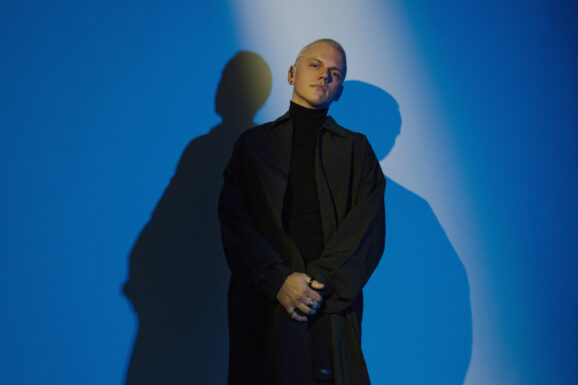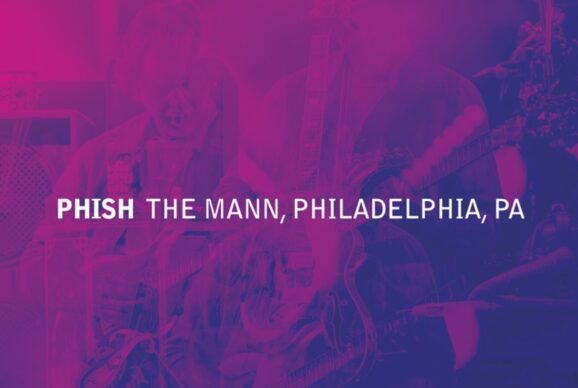With a half-century hindsight, Quadrophenia (released 11/3/73) is indisputably the Who’s masterwork. Based on chief composer Pete Townshend’s perceptions of the group’s early audiences and their connection to the band in its nascent stages, this sixth studio effort of the group’s is a culmination of a growing creative ambition that extends back to 1966’s “A Quick One While He’s Away” and the only partially fulfilled concept(s) of the next year’s The Who Sell Out.
The allegory of Tommy brought the quartet to a mainstream audience, while the salvaging of multi-leveled concepts behind the aborted Lifehouse project, resulting in Who’s Next, only further elevated the group’s prominence with the public at large (not to mention among their British rock peers). Yet even without a comparable commercial response at the outset of its release, the 1973 entry in the British band’s discography has grown exponentially in importance and influence in the interim.
Townshend’s self-effacing essay in the 2011 Deluxe Edition radiates a clarity of mind altogether remarkable considering not only his engagement in the process but also the circumstances surrounding the production of Quadrophenia. Distractions arose during recording as the Who’s own Ramport Studios were still under construction, necessitating the use of mobile equipment. Nevertheless, demos the guitarist/vocalist submitted to the rest of the group, like “I’ve Had Enough,” fostered consistently powerful performances from Roger Daltrey, John Entwistle, and Keith Moon.
Their kinetic interplay on vocals, bass, and drums, with Townshend himself on guitars, formed the bedrock for cuts such as “Doctor Jimmy.” With the additional integration of the aforementioned bassist’s brass, synthesizers, and other keyboards, plus a variety of sound effects, Quadrophenia ended up with such a dramatic soundscape the filming of a movie was inevitable (and it happened in 1979 doing full justice to its source).
From the very outset of the thunderous opening that is “The Real Me,” Quadrophenia fully deserves the increasing recognition it’s gained over the years, in part through the continual attention Townshend and Daltry have afforded it on recent tours (especially those with orchestras). Released as the initial single, “5:15” has become one of the package’s most recognizable selections: if it wasn’t already readily apparent, remix/remastering reveals how, throughout the original album’s seventeen tracks, the arrangements are as tightly interwoven as the performances are focused.
The Who’s collective musicianship is beyond reproach during selections like “Helpless Dancer.” Likewise, the majestic conclusion of “Love Reign O’er Me,” is, not surprisingly, a natural extension of the progress the quartet had made as recording artists on the previous release under the tutelage of associate producer Glyn Johns. Studio collaborator of the Beatles and Rolling Stones, among many others, he oversaw the latter number on Quadrophenia as one of two of the earliest recordings in 1972, work completed before Who manager and mentor Kit Lambert entered, then exited the project.
But the remainder of the basic tracks also find the quartet playing with remarkable power and precision. It’s not all that far removed from the raw intensity of its live performances–as documented on Live At Leeds three years prior–but it’s still a marvel to behold how cuts such as “I’m One” take on such emotional and instrumental complexity.
The density of sound overall is a direct reflection of the foursome’s playing. In fact, the tangible level of energy preserved on the band’s finished takes–and the resulting visceral impact–is a marked improvement over the comparatively flat state of the rock opera in its 1969 studio rendition (the unfortunate result of excessive repeats in its recording.
Though it was written, according to its author, three years before the earliest gestation of the storyline that would become this song cycle, “Drowned” represents a crucial dramatic point for the main character Jimmy the Mod. Townshend’s ability to incorporate and then collate such ideas in such a way his bandmates empathized with the characters (“Bell Boy”) and the settings (“Sea and Sand”) ensures there’s no mawkish nostalgia here.
Instead, Quadrophenia proffers fresh discernment and appreciation of personal and collective rites of passage–“Is It In My Head?” indeed! Pete’s narrative is no less uncanny for the vivid depiction of the locale of Brighton Beach and the stultifying homelife of the main character. Meanwhile his bandmates’ familiarity with it all, on something like “The Punk Meets The Godfather,” bespeaks their collective comprehension of this storyline (in marked difference to that of Lifehouse).
All the more reason then to incorporate four separate musical motifs, on a recurring basis, into these eighty-some minutes. The double-fold digipak of the aforementioned two-CD reissue of Quadrophenia restored and expanded the original purposefully black and white graphics, right down to those images of the four bandmembers who appear in the mirrors of Jimmy’s scooter on the front cover, it’s a sensory experience quite comparable to that of its release five decades ago.
Yet the original four-man lineup of the Who only conducted minimal road support of the album. Both sojourns were fairly truncated affairs, scheduled almost immediately following completion of recording, each in its own way plagued by difficulties including, but not limited to extensive use of backing tapes. The shock and dismay in Pete Townshend’s face is palpable as he recounts being informed of these tours during the documentary devoted to the magnum opus.
Quadrophenia: Can You See the Real Me? had only grievously limited circulation. Limited to one-night showings in theaters in 2012, it was offered afterward only as online distribution, never in any physical form. Nonetheless, live performances by a reconfigured and expanded Who ensemble over the years continued to shed light on the bedrock virtues of this watershed work, as did Phish’s performance of the piece, in its entirety, with an additional four-man horn section, as the second of their Halloween musical costume concerts.
The decidedly autobiographical nature of Townshend’s writing, combined with the distinctly British cultural touchpoints of the Mods versus Rockers rivalry, may have originally depicted Quadrophenia as too provincial for its own good. But that objection’s become a moot point over the course of fifty years. That very passage of time has helped reveal this herculean effort not only as a discerning treatise on adolescence, loss of innocence, and the inevitability of maturity but also a healthily detached vision of cultural fashion.
The Who’s crowning achievement is a statement rendered all the more powerful by the interactions of the four men in the band. Literally and figuratively, each of those vibrant personae found complementary means to express their individual and collective personalities to magnificent effect on Quadrophenia.









